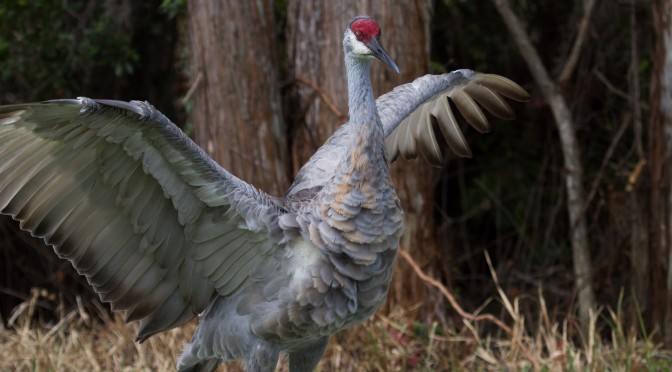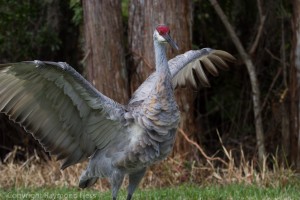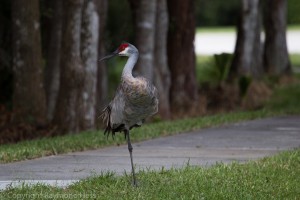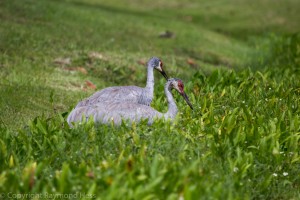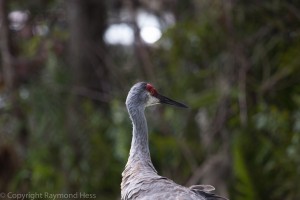The sandhill crane is one of the largest of the cranes, and are common along Florida’s gulf coast. During November and December migratory birds arrive, more than doubling the bird’s population. They remain until their departure in the months of March and April.
You will most often see two or three cranes in a group. The sandhill crane is considered monogamous, meaning they choose 1 mate and stay with that mate for life. The birds nest in freshwater ponds and marshes. Interestingly, both the male and female participate in incubating the 2 eggs the female lays. There is a 32 day incubation period until the offspring emerge from the eggs.
Within 24 hours the young can venture out from the nest. Juveniles are capable of leaving their parents at 10 months and bonding typically begins at two years. Some sandhill cranes live for 20 years.
An interesting physical feature of this bird is the out-streched neck while in flight, in contrast to the tucked neck of most egrets (similar looking bird).
These cranes are protected by the US Migratory Bird Treaty Act, and also by Florida’s Endangered and Threatened Species Rule under which they are classified as threatened.
